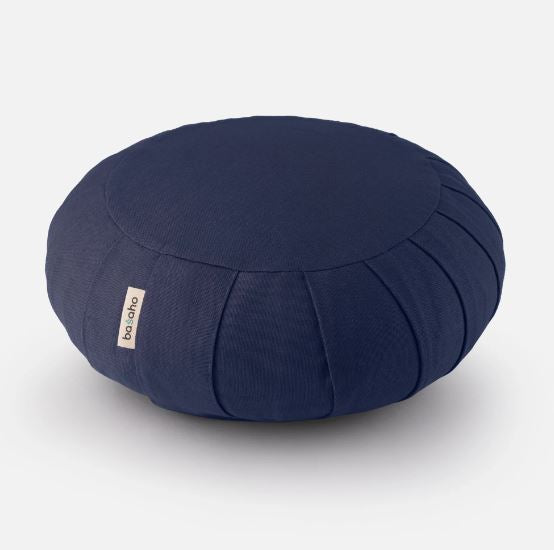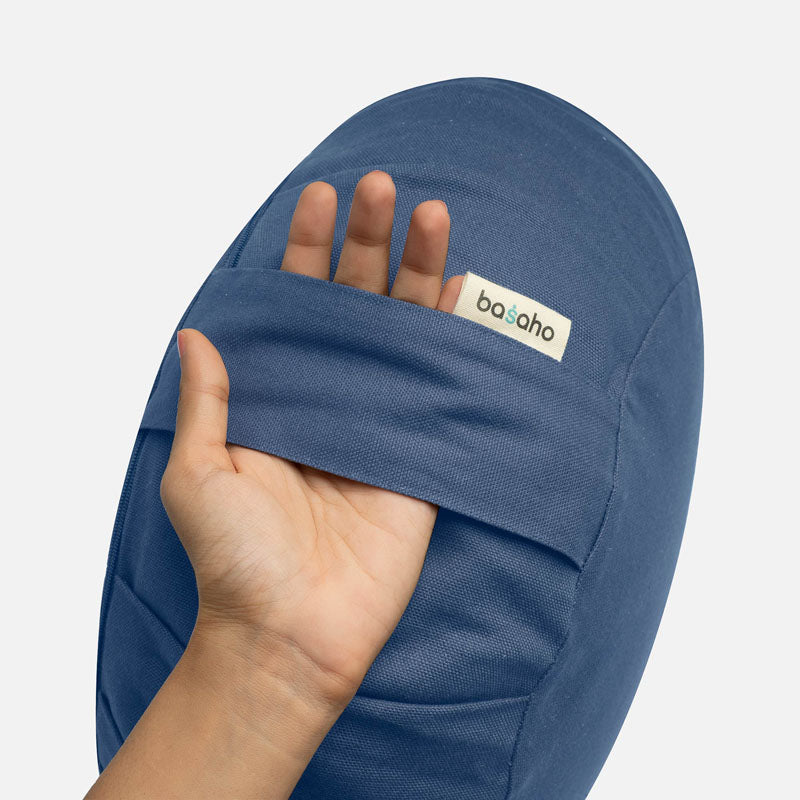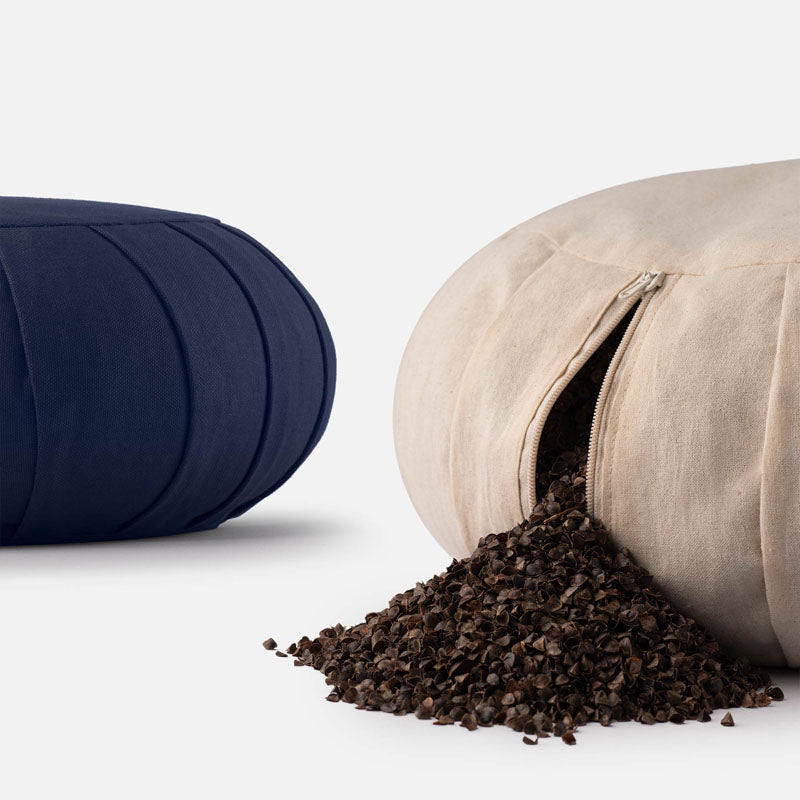
The Classic Zafu Meditation Cushion stands out within the meditation tools, representing a timeless appeal that transcends generations. Meditation, as we know, is a practice as old as humanity itself, intricately woven into the cultural fabric of societies from Japan to China, bearing testimony to the enduring quest for inner peace.
Origins of the Zafu Cushion
Understanding the history, Zafu finds its roots in ancient Buddhist traditions. Originating in Zen Buddhism, the Zafu cushion was an instrumental tool to aid monks and practitioners in their meditation practice. The word "Zafu" itself, when broken down, contains "Za," meaning "seat," and "Fu," denoting reedmace, hinting at its traditional filling.
Design and Making of the Traditional Zafu
The quintessential Zafu boasts a round, firm design. This circular formation isn't just for aesthetics; it is steeped in symbolism and practicality. A round cushion facilitates the cross-legged or lotus posture, promoting the alignment of the spine. The craftsmanship of the past often relied on organic materials such as cotton or wool, occasionally using buckwheat or kapok for firmer support.

The Role of Classic Zafu Cushion in Meditation
Meditation requires impeccable posture. Proper alignment of the spine, achieved through sitting on a Zafu, ensures the body's energy flows unhindered. More than just a seat, the Zafu enhances focus and mindfulness, allowing meditators to delve deeper into their practice without the discomfort of sitting directly on the floor.
Cultural Journey of the Zafu Cushion
From the tranquil monasteries of Japan to bustling cities in China, the Zafu cushion has been embraced and integrated into various meditation practices. With the spread of Buddhism, the design and essence of the Zafu evolved, reflecting the unique characteristics of each culture it touched.
Modern Adaptations of the Zafu
Today, the Zafu cushion has many designs, materials, and patterns. Contemporary cushions often employ buckwheat hulls or synthetic fibers for support and comfort. Modern Zafus are available in non-traditional colors, sometimes even bearing patterns, catering to the aesthetic needs of the global audience.
Using Zafu in Today's Meditation Practices
The ancient wisdom encapsulated in the Zafu cushion finds relevance even in today's fast-paced world. By integrating the Zafu into modern routines, practitioners can experience enhanced mindfulness enjoying various benefits of daily meditation.
The Zafu Cushion and Modern Wellness
There's an undeniable link between meditation and mental well-being. The Classic Zafu meditation cushion promotes prolonged meditation by providing support and comfort. This, in turn, augments holistic wellness, making Zafu an indispensable tool in the modern wellness arsenal.

Zafu in Meditation Retreats and Zen Monasteries
The sanctity of the Zafu meditation cushion remains undiminished in spiritual centers worldwide. Meditation retreats, influenced by Zen Buddhism, emphasize the importance of posture, making Zafu cushions indispensable. Many contemporary retreats, while incorporating modern conveniences, retain the Zafu legacy.
Caring for Your Zafu Cushion
A Zafu, when maintained properly, can last a lifetime. Regular cleaning, avoiding moisture, and periodic sunning ensure its longevity. For cushions with buckwheat hulls, occasional hull replacement might be necessary.
Beyond Meditation: Other Uses of Zafu Cushions
While its primary purpose is meditation, the Zafu cushion's versatility can't be ignored. It finds use in yoga practices, sometimes complemented by the flat, square, or rectangular Zabuton mat. In modern homes, these cushions sometimes serve as floor seating, adding a touch of Zen to living spaces.
The Commercial Rise of Zafu Cushions
From an item of sanctity in monasteries to a commercial product in stores, the journey of the Zafu cushion has been remarkable. Today, top brands such as Basaho and artisanal makers offer a variety of Zafu cushions, catering to diverse needs and preferences.
The Global Reach of the Zafu
The Zafu cushion has permeated different cultures and societies across the globe, from Japan and China to the West. Its introduction to the West came during heightened interest in Eastern philosophies, Buddhism, and Zen practices. As people in the U.S., Europe, and other regions delved deeper into meditation and mindfulness, the classic Zafu meditation cushion became essential, helping maintain a steady posture and facilitating longer periods of reflective contemplation.
The Science Behind the Posture
The ergonomic design of the Zafu, combined with its firmness, supports the spine in a natural curve. The hips are elevated when one sits cross-legged or in the lotus position, ensuring the spine remains aligned. This alignment is crucial for comfort and the free flow of energy, or "chi," as it's referred to in traditional Chinese medicine. Scientifically, a proper posture ensures unrestricted respiratory movement and better oxygenation, enhancing the overall meditation experience.
Materials Through Time
From the traditional kapok fillings to contemporary buckwheat hulls and even wool or cotton, the choice of material for the Zafu has evolved, yet the essence remains the same.
The goal has always been to provide comfort while ensuring the firm support essential for prolonged meditation. Many artisans explore eco-friendly materials in the quest for sustainability, ensuring that the Zafu remains relevant in today's eco-conscious world.

Innovations in Zafu Design
While the round Zafu remains the most recognized shape, innovators and designers now offer wheel zafu meditation, wedge zafu meditation, and even crescent-shaped cushions. The zabuton, a flat cushion, often accompanies the Zafu, providing added comfort for the knees and ankles. These design evolutions ensure that every individual finds a cushion that suits their needs regardless of their flexibility or meditation style.
The Therapeutic Potential of Zafu
Beyond spiritual and mindfulness practices, therapists and wellness experts recognize the therapeutic potential of using a Zafu. From aiding in spinal alignment exercises to serving as a tool in physiotherapy sessions, the applications are diverse. Moreover, in mental health, therapists often recommend meditation as a coping mechanism, with the Zafu playing a crucial role in facilitating this healing practice.
Frequently Asked Questions
Is the Zafu cushion specific to Zen Buddhism?
While Zafus are closely linked to Zen Buddhism, they've been adopted by various meditation practices globally due to their benefits.
Are there specific colors associated with Zafu in traditional practice?
Traditionally, Zafus were often in subdued tones like black or brown, but contemporary designs embrace a wide color palette.
How long have Zafus been in existence?
Zafus traces back several centuries, deeply intertwined with the history of Zen Buddhism and meditation practices in Asia.
